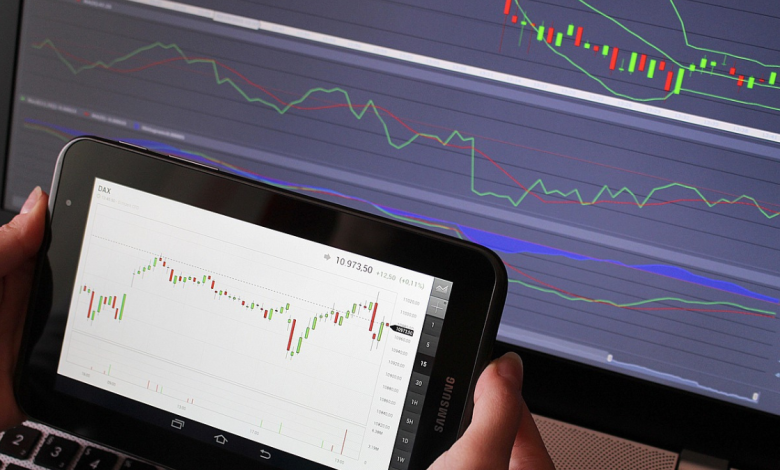Advanced Forex Trading Techniques for Gauteng Traders

Forex trading holds immense potential for traders, especially in Gauteng, the financial hub of South Africa. As more traders flock to the forex market, it’s essential to elevate your trading strategies beyond the basics. By applying advanced forex trading techniques, you can maximise profits, minimise risk, and stay ahead in the market. This article will explore key strategies and methods that professional traders in Gauteng use to thrive in the dynamic world of forex.

Related: Managing Risk in Forex Trading: Essential Tips for Gauteng Traders
What Are Forex Trading Techniques?
Forex trading involves buying and selling different currencies in the global marketplace. Forex trading techniques refer to the tools and strategies used to make informed decisions about when to buy or sell a currency pair. Success in the forex market requires more than just a basic understanding of how currencies move; it demands an in-depth knowledge of market trends, technical analysis, and risk management.
In Gauteng, where local economic factors like inflation, interest rates, and political events influence currency movements, using advanced trading techniques can give you a crucial edge. Let’s dive into the key strategies that can take your forex trading to the next level.
1. Mastering Price Action Trading
One of the most effective advanced techniques is price action trading. This strategy involves making decisions based on the historical price movements of a currency pair, without relying heavily on technical indicators.
Price action trading focuses on key price levels such as support and resistance, trendlines, and candlestick patterns to predict future market direction. For traders in Gauteng, understanding price action can be particularly valuable when trading volatile pairs like the South African Rand (ZAR).
Key Price Action Strategies:
- Support and Resistance: These price points highlight where a currency pair has historically reversed direction. When a currency approaches support, it may be a good time to buy; when it hits resistance, selling might be the best option.
- Candlestick Patterns: Candlestick formations like doji or engulfing candles can provide important signals for market reversals or continuation. For example, an engulfing candle at support might suggest an upcoming price bounce.
For an in-depth explanation of price action, visit Investopedia’s Guide to Price Action Trading.
2. Leveraging Technical Indicators
While price action is powerful, many traders in Gauteng complement it with technical indicators. These tools are based on mathematical calculations derived from historical price data and can provide insights into market trends and potential turning points.
Commonly Used Indicators:
- Moving Averages (MA): Moving averages smooth price data over a defined period to identify trends. The 50-day and 200-day moving averages are often used to spot long-term trends.
- Relative Strength Index (RSI): RSI is a momentum indicator that measures the speed and change of price movements. If the RSI crosses above 70, the market may be overbought; below 30, it could be oversold.
- MACD (Moving Average Convergence Divergence): MACD helps identify changes in the strength, direction, momentum, and duration of a trend. It’s a go-to indicator for traders looking for entry or exit signals.
For more on these indicators, check out TradingView’s Technical Analysis.
3. Implementing Robust Risk Management
Effective risk management is one of the cornerstones of successful trading, especially in markets as volatile as forex. For Gauteng traders dealing with the unpredictable nature of the South African rand, risk management is crucial for long-term success.
Risk Management Tools:
- Stop-Loss Orders: Stop-loss orders automatically close a trade at a specific price to limit potential losses. For instance, if you enter a trade at 15.50 ZAR/USD and set a stop-loss at 15.30 ZAR/USD, the position will close automatically if the price hits 15.30, helping to minimise losses.
- Position Sizing: Position sizing refers to determining how much capital to risk per trade. A common rule is to risk no more than 1-2% of your total trading capital on a single trade.
- Risk-to-Reward Ratio: This ratio compares the potential risk with the potential reward. Traders aim for a risk-to-reward ratio of at least 1:2, meaning that the reward should be at least twice the size of the potential loss.
Learn more about risk management on FXCM’s Risk Management Guide.
4. Understanding Market Psychology
Market psychology is a powerful force that often drives price movements in the forex market. By understanding trader sentiment, you can anticipate how emotions like fear and greed may impact price action.
- Fear and Greed: When the market is fearful, traders tend to sell off, leading to falling prices. Conversely, during periods of greed, prices often rise as traders irrationally buy into the market.
- Crowd Behaviour: Advanced traders look for signs of herd mentality, where most traders are following the crowd. By understanding the market’s collective sentiment, you can identify potential reversals and take advantage of market inefficiencies.
Sentiment analysis tools like those on DailyFX can give you a broader understanding of how the market feels, helping you make more informed trading decisions.
5. Staying Informed with Fundamental Analysis
While technical analysis focuses on price patterns, fundamental analysis looks at the economic, political, and social factors influencing currency prices. For Gauteng traders, staying up-to-date on global economic trends and local events is essential.
Key Economic Indicators to Monitor:
- Interest Rates: Central banks, such as the South African Reserve Bank (SARB) or the U.S. Federal Reserve, regularly change interest rates, which can significantly impact currency value. For example, when the SARB raises rates, the rand often strengthens.
- Geopolitical Events: Events such as political instability, trade agreements, or natural disasters can cause market volatility. Being aware of these events can help you predict sudden price movements.
Follow reliable sources like Reuters Financial News to stay informed about global and local economic developments.
6. Exploring Algorithmic and Automated Trading
For those looking to take their trading to the next level, algorithmic or automated trading can be a game-changer. These systems use predefined rules to execute trades based on specific conditions, allowing traders to take advantage of opportunities without constant monitoring.
Automated systems can also help reduce emotional trading, which is often detrimental. By programming algorithms to execute trades based on predefined parameters, traders can ensure they stick to their strategy and avoid knee-jerk reactions during market volatility.
Explore options like MetaTrader 4 to start building your automated trading systems.
CHECK OUT: The Best Times to Trade Forex : Optimizing Your Schedule for Market Volatility
Final Words
Incorporating advanced forex trading techniques into your strategy can make a huge difference in your success. Whether you’re using price action trading, technical indicators, or automated systems, the key is to develop a disciplined approach, use risk management effectively, and understand the psychology of the market.
For Gauteng traders, the ability to stay informed and adapt to changing market conditions is crucial. By combining these advanced techniques with continuous learning, you can unlock new trading opportunities and enhance your chances of long-term profitability.
READ MORE: Common Forex Trading Mistakes Made by Gauteng Beginners and How to Avoid Them



